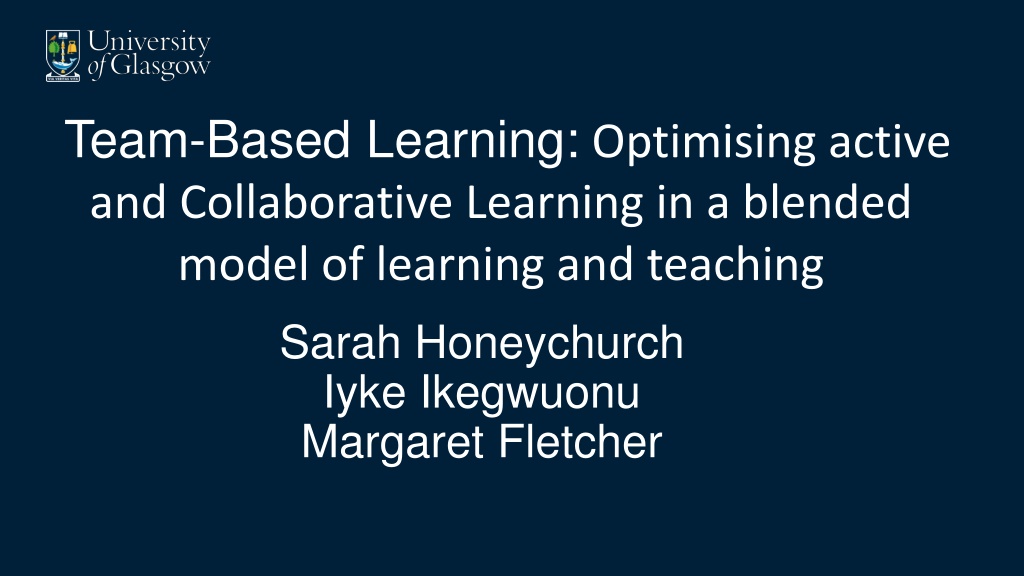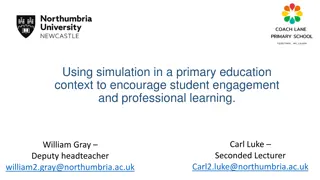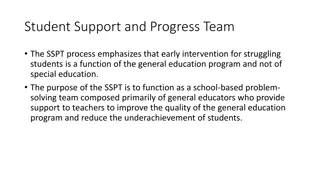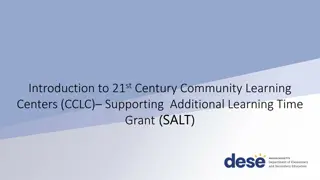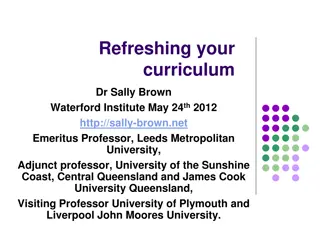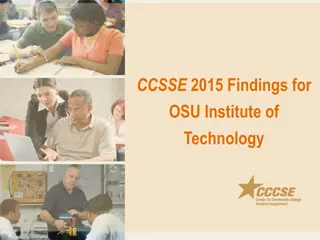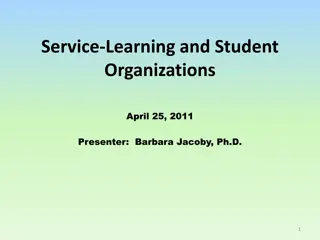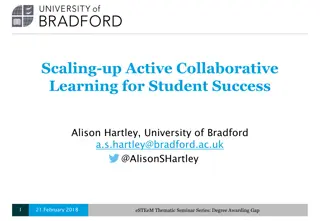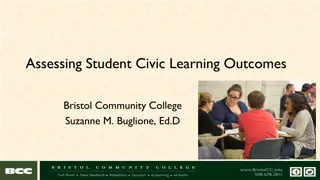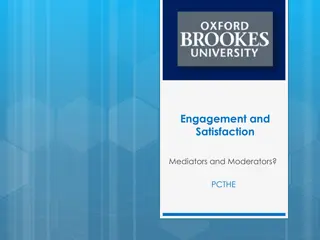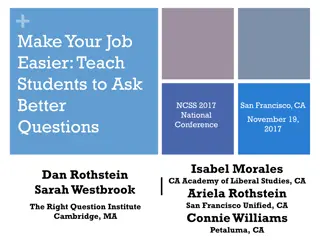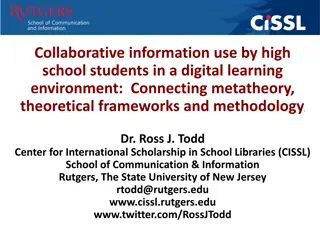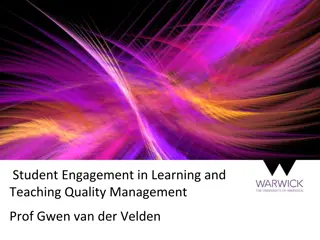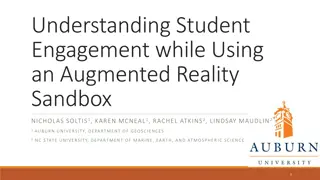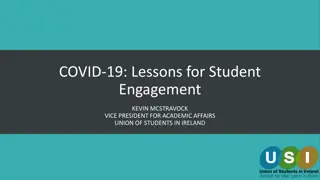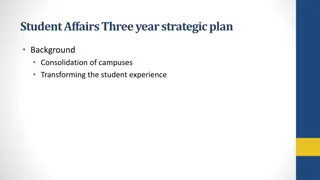Enhancing Student Engagement through Team-Based Learning in MSc International Business
Explore the innovative approach of Team-Based Learning (TBL) to optimize active and collaborative learning in a blended model for MSc International Business students. TBL emphasizes structured group work, readiness assurance process, application activities, and key design principles to foster accountability, problem-solving skills, and engagement among students.
Download Presentation

Please find below an Image/Link to download the presentation.
The content on the website is provided AS IS for your information and personal use only. It may not be sold, licensed, or shared on other websites without obtaining consent from the author. Download presentation by click this link. If you encounter any issues during the download, it is possible that the publisher has removed the file from their server.
E N D
Presentation Transcript
Team-Based Learning: Optimising active and Collaborative Learning in a blended model of learning and teaching Sarah Honeychurch Iyke Ikegwuonu Margaret Fletcher
Welcome Structure of session today What is TBL? Our cohort: MSc International Business Practical exercises Questions
What is TBL? A special form of collaborative learning using a special sequence of individual work, group work and immediate feedback to create a motivational framework in which students increasingly hold each other accountable for coming to class prepared and contributing to discussion. https://sites.dundee.ac.uk/discovermeded/european-team-based-learning- community-masterclasses-at-the-university-of-dundee/ Raise awareness of the importance of professional and academic skills development. Focus on graduate attributes University of Glasgow Learning and Teaching Strategy 2021-2025
Key design principles Highly-structured form of small group learning Teams must be properly formed and managed Permanent groups of 5-7 (selected by educator) Students must be motivated to come to class prepared Students must learn to use course concepts to solve problems Students must be accountable to themselves and to others Removes passivity Removes anonymity
What is TBL (Cont)? TBL modules/units: variable length Pre-class preparation (flipped teaching) Readiness Assurance Process (RAP) Application activities Optional peer evaluation of group members Optional group/individual summative assessment Suitable for asynchronous online learning Michaelsen and Sweet (2011)
Readiness Assurance Process (RAP) Flipped classroom model Pre-class activity (journal article, text book chapter, video) Individual test (iRAT) Group test (tRAT) Mini-lecture remediation if needed (Just in Time Teaching)
Application Activities Four essential elements: Significant Problems Same Problem Specific Choice Simultaneous Report
MSc International Business Programme Learning outcomes include: Applying theory to practice in operating within multicultural teams Understanding the benefits and challenges of multicultural team-working Problem-solving in multicultural teams Developing of international management competences Improving time management and workload planning Critical reflection on roles, responsibilities and performance in team-working, including cross-cultural influences
Appreciating diversity TBL was partly driven by the acknowledgement that this programme attracted a highly diverse student base (e.g. 16 countries) Group allocation criteria developed includes; Country and regional background Gender Prior knowledge/ qualifications and experience Personality type: Personality Poker, Belbin
What we did? MGT5259 Market Analysis International Business 2020/21 2x2-hour online sessions 4x facilitators Session 1: 46 students Session 2: 23 students 2021-22 1x 2 hour online session 3x facilitators 70 students
TBL Online: Pre-class Instructions were emailed/uploaded to Moodle a week in advance Book chapter Information about application exercises Students completed and saved iRAT answers beforehand (using YACRS/quiz software)
TBL Online: In-class Students completed tRAT in break out rooms Student groups simultaneously declared answers in main room using chat function in Zoom. Students had opportunity to provide constructive feedback to peers Educators provided feedback to student groups Mini-lecture - Instructor gave 2 minutes recap of the key points
TBL Online: Evaluation Student evaluation of course was positive About 96% either strongly agreed or agreed that they had sufficient opportunity to interact with others in the course. TBL felt like personally participating in an entrepreneurial project TBL tutorial was best experience and very valuable
Break out activity Individually 1. Quickly decide the answer to the questions on your own As a group 1. Appoint a notetaker and spokesperson 2. Reach consensus about the answers
iRAT/tRAT 1. What is the correct order for these elements of a TBL Cycle: A. iRAT and tRAT, Reading, Mini Lecture, Application Activities B. Reading, iRAT and tRAT, Mini Lecture, Application Activities C. Reading, Mini Lecture, iRAT and tRAT, Application Activities D. Reading, Lecture, iRAT and tRAT, Mini Application Activities 2. What does RAP stand for? A. Readiness application process B. Real application process C. Readiness assurance process D. Real assurance process 3. What is the 4S Framework? A. Significant Problems, Same Problem, Specific Choice, Simultaneous Report B. Simultaneous Problems, Same Problem, Specific Choice, Significant Report C. Significant Problems, Same Problem, Same Choice, Simultaneous Report D. Significant Problems, Same Problem, Specific Choice, Same Report
Feedback When prompted: Each notetaker posts the answers in Zoom chat: [group number] 1x 2x 3x
Answers 1. What is the correct order for these elements of a TBL Cycle: A. iRAT and tRAT, Reading, Mini Lecture, Application Activities B. Reading, iRAT and tRAT, Mini Lecture, Application Activities C. Reading, Mini Lecture, iRAT and tRAT, Application Activities D. Reading, Lecture, iRAT and tRAT, Mini Application Activities 2. What does RAP stand for? A. Readiness application process B. Real application process C. Readiness assurance process D. Real assurance process 3. What is the 4S Framework? A. Significant Problems, Same Problem, Specific Choice, Simultaneous Report B. Simultaneous Problems, Same Problem, Specific Choice, Significant Report C. Significant Problems, Same Problem, Same Choice, Simultaneous Report D. Significant Problems, Same Problem, Specific Choice, Same Report
Break out activity: Application Exercise 1. From a staff perspective, which of the following do you believe is the most important benefit of TBL to students? 10 minutes A.Increased breadth of content covered B.Enhanced student attendance C.Increased student engagement D.Reduction in staff workload E.Increased student attainment F. Enhanced student motivation G.Promotes deeper approaches to learning H.Development of skills to enhance employability
Feedback (Cont) When prompted: Each notetaker posts the answer in Zoom chat:
Useful Links This video shows Team-Based Learning being used at Anglia Ruskin University Business School. This video of TBL at Nanyang Technological University by Dr Preman Rajalingham demonstrates how TBL works in practice. This video show how Duke School of Medicine embraced Team-Based Learning The Team-Based Learning Collaborative provides an introduction to TBL and advice on getting started, as well as links to relevant books and journal articles. The site also acts as a community of practice for TBL practitioners. Carleton University Starting Point: Teaching and Learning Economics. Why Use Team-Based Learning? Dartmouth University Team-Based Learning Example Vanderbilt University Team-Based Learning Yale University Poorvu Center for Learning and Teaching. Team-Based Learning
References Hrynchak P and Batty H. (2012) The educational theory basis of team-based learning. Medical Teacher 34: 796-801. Michaelsen, L. K., Knight, A. B., & Fink, L. D. (Eds.). (2004). Team-based learning: A transformative use of small groups in college teaching (1. Stylus paperback edition). Stylus Publishing. Michaelsen, L. K., & Sweet, M. (2008). The essential elements of team-based learning. New Directions for Teaching and Learning, 2008(116), 7 27. https://doi.org/10.1002/tl.330 Michaelsen, L. K., & Sweet, M. (2011). Team-based learning. New Directions for Teaching and Learning, 2011(128), 41-51. doi:10.1002/tl.467 Parmelee, D., Michaelsen, L. K., Cook, S., & Hudes, P. D. (2012). Team-based learning: A practical guide: AMEE Guide No. 65. Medical Teacher, 34(5), e275-e287. doi:10.3109/0142159X.2012.651179
References (2) Rajalingam, P., Rotgans, J. I., Zary, N., Ferenczi, M. A., Gagnon, P., & Low-Beer, N. (2018). Implementation of team-based learning on a large scale: Three factors to keep in mind*. Medical Teacher, 40(6), 582-588. doi:10.1080/0142159X.2018.1451630 Reimschisel, T., Herring, A. L., Huang, J., & Minor, T. J. (2017). A systematic review of the published literature on team-based learning in health professions education. Medical Teacher, 39(12), 1227- 1237. doi:10.1080/0142159X.2017.1340636 Sibley, J. (2014). Getting started with team-based learning (First edition). Stylus Publishing. Thompson, B. M., Schneider, V. F., Haidet, P., Levine, R. E., McMahon, K. K., Perkowski, L. C., & Richards, B. F. (2007). Team-based learning at ten medical schools: two years later. Medical Education, 41(3), 250-257. doi:10.1111/j.1365-2929.2006.02684.x
